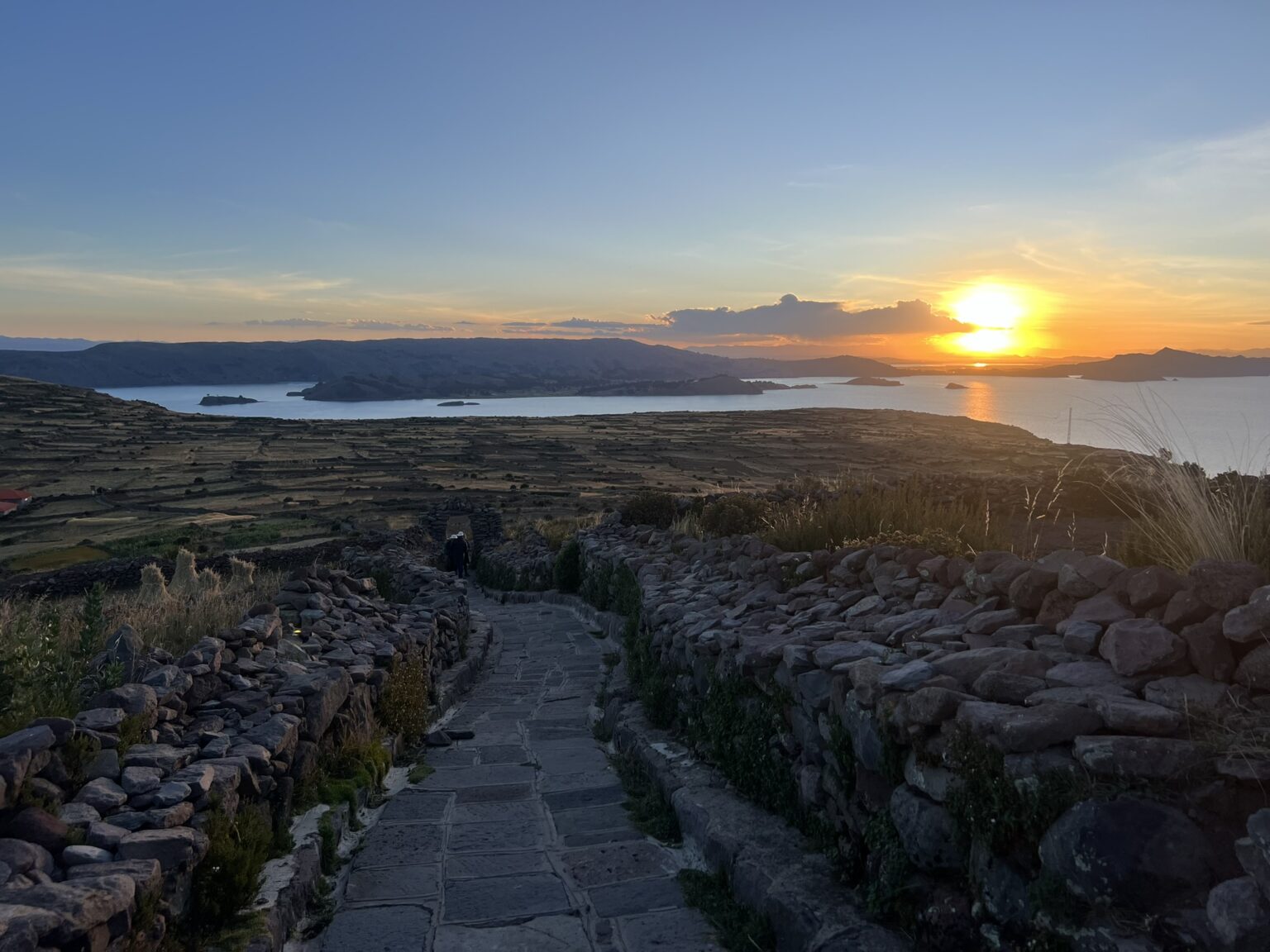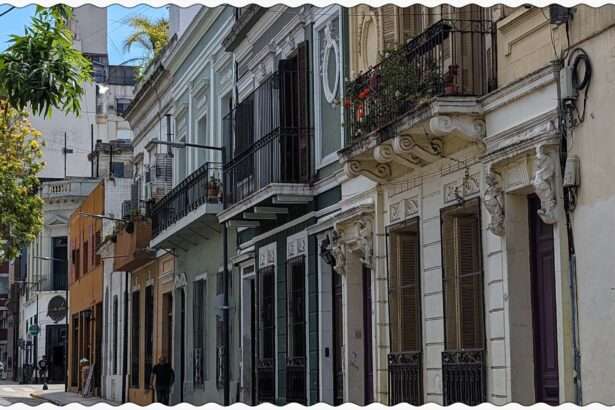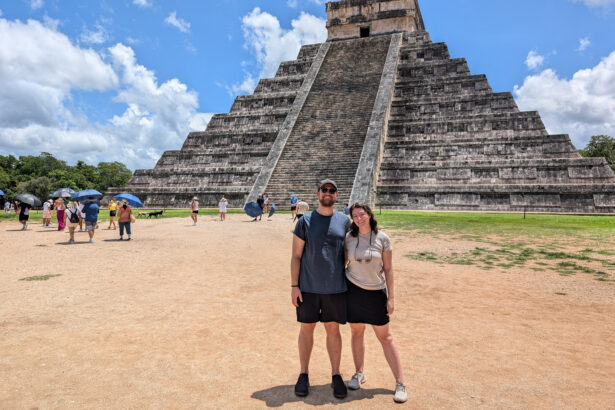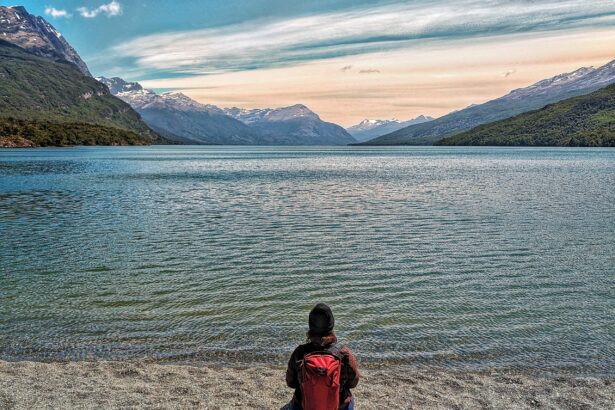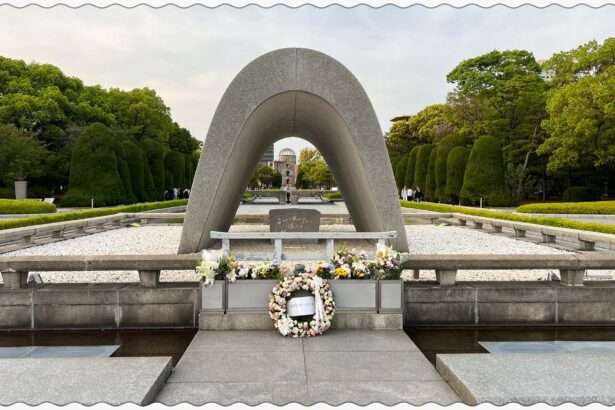Lake Titicaca is known as the highest navigable lake in the world and was an important part of pre-Hispanic cultures. We spent time boating around Lake Titicaca to its biggest islands to learn more about past and present culture.
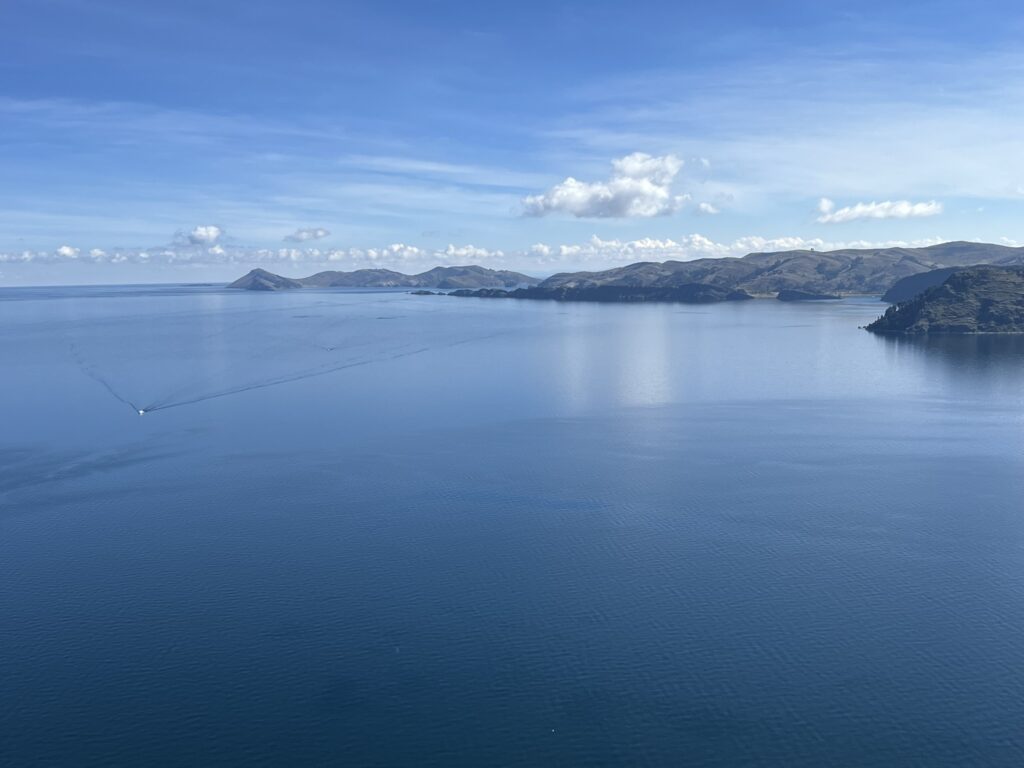
Best Thing I Ate This Week
Trucha de Lago Titicaca from Restaurante Los Angeles
Taquile Island is located in Peru and is the 3rd biggest island in Lake Titicaca with about 2000 inhabitants. It is known for its famous textile production where every male of the community is taught to knit from a young age. There are no vehicles on the island and getting to the main plaza from the boat docks requires a 45-minute uphill climb through the community with incredible views of Lake Titicaca.
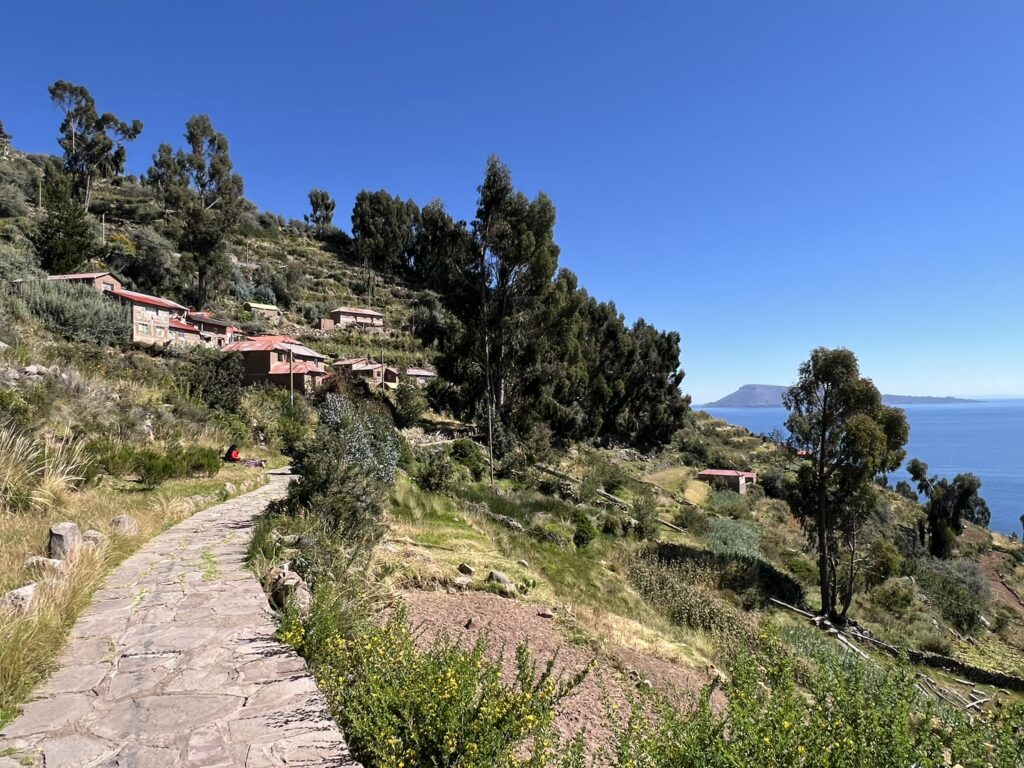
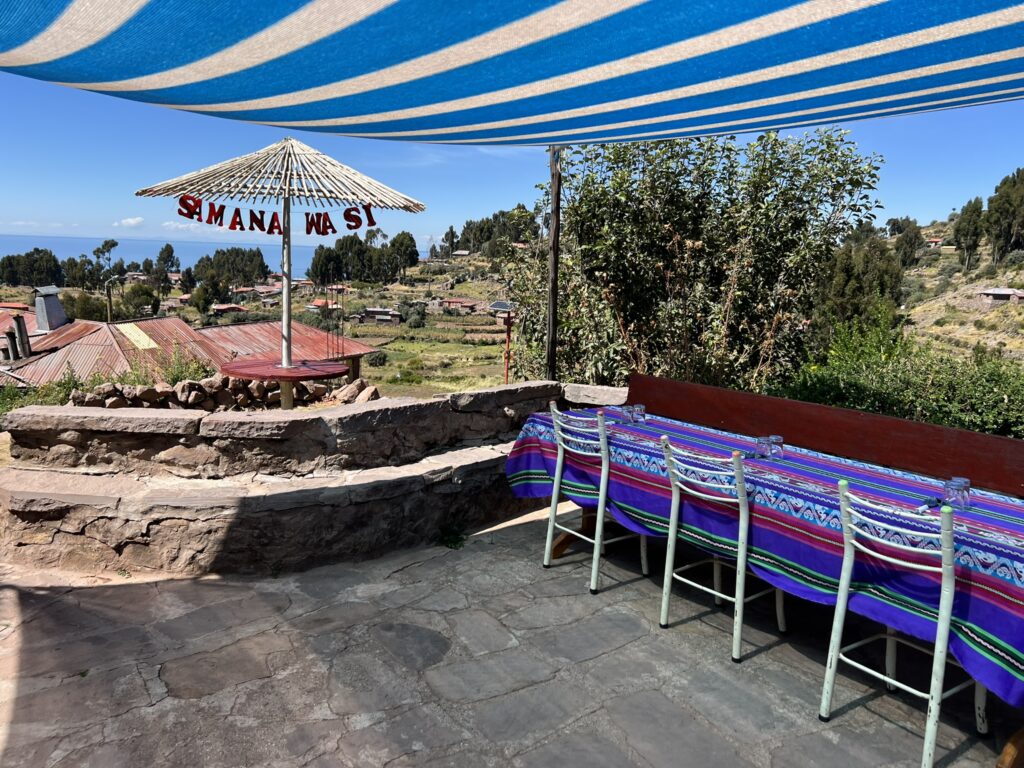
Los Angeles Restaurante is a family-run establishment located a short walk from the main plaza. It is situated on a hill with beautiful views of the houses and Lake Titicaca below. In addition to serving food, the family that runs the restaurant creates natural soap from the plants found on the island and during our lunch provided a demonstration of how they make it.
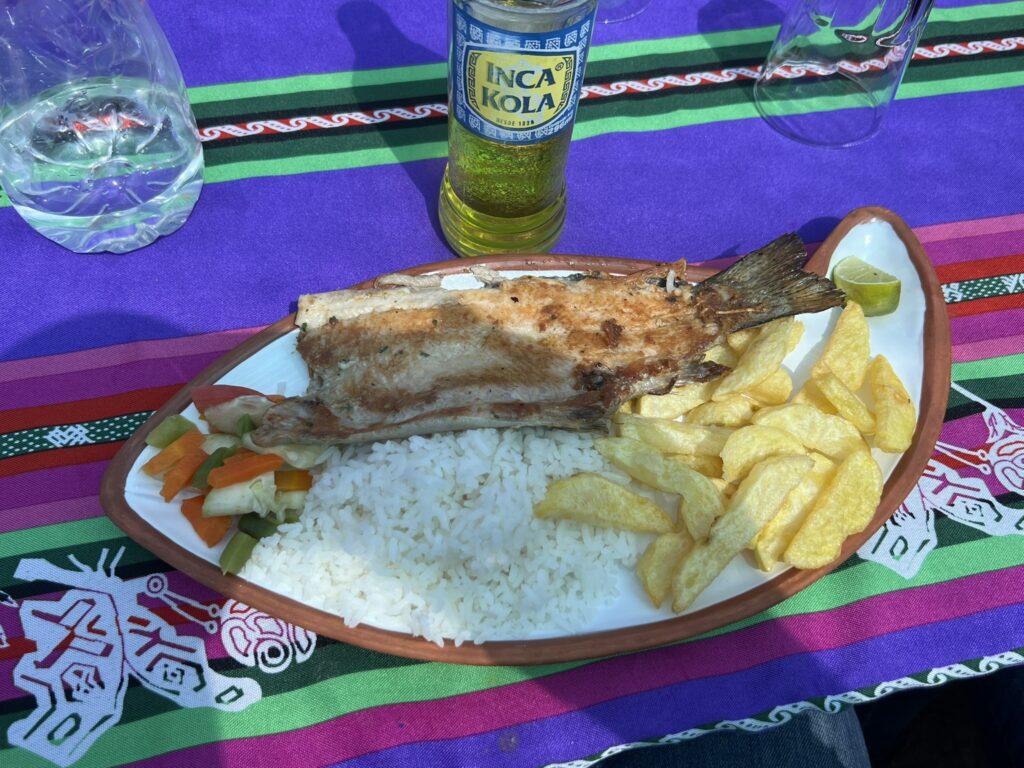
The Trucha (trout) was grilled and served with rice, french fries, and quinoa soup. Although the fish was not initially native to Lake Titicaca, it is now the predominant species in the lake and a staple of the diet for the local population. It was perfectly prepared and a delicious meal while taking in the views of the island.
An Interesting Fact I Learned
Boating Around Lake Titicaca: Uros Floating Islands were created to escape the Incas
A few miles from Puno, Peru the Uros Floating Islands can be found in Lake Titicaca. Visiting the islands is a top activity for those who go to Lake Titicaca, but I initially thought they were artificial structures built to attract tourists. The first stop on our cultural tour of Lake Titicaca was at one of the floating islands so that we could learn more about the island’s purpose from the people who live on it.
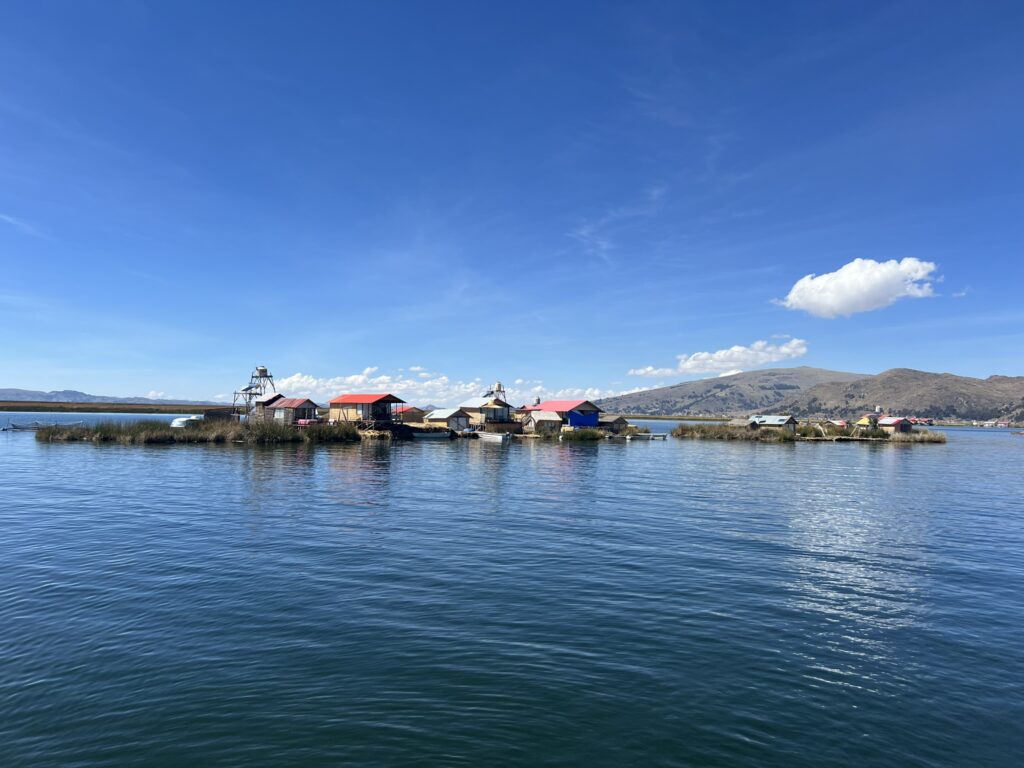
It turns out that the islands were created hundreds of years ago to escape the danger from invaders. When the Incas arrived, the population could move their islands around the lake and avoid being conquered. Some believe the population is direct descendants of the earliest inhabitants of Lake Titicaca but over the years the population mixed with those on the mainland, adopting the local Aymara traditions.
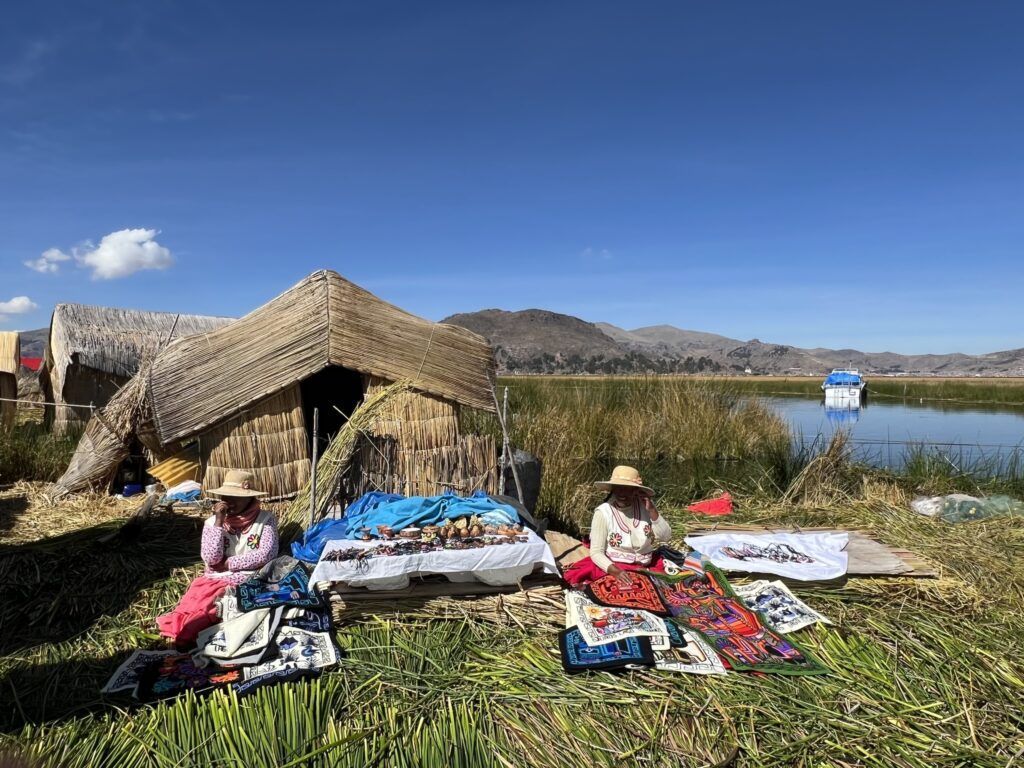
Each island is made up of a few families that live on the specific floating island as a community. They elect a president who serves as the leader of that island and oversees the well-being of the community. The islands, houses, and boats in Uros are created from the totora plants that are found in abundance in Lake Titicaca. The community continually harvests the reeds to conduct maintenance on their island homes. It is a lifestyle unlike any other I had experienced and the family we visited was so nice to welcome us to their home and share more about their culture.
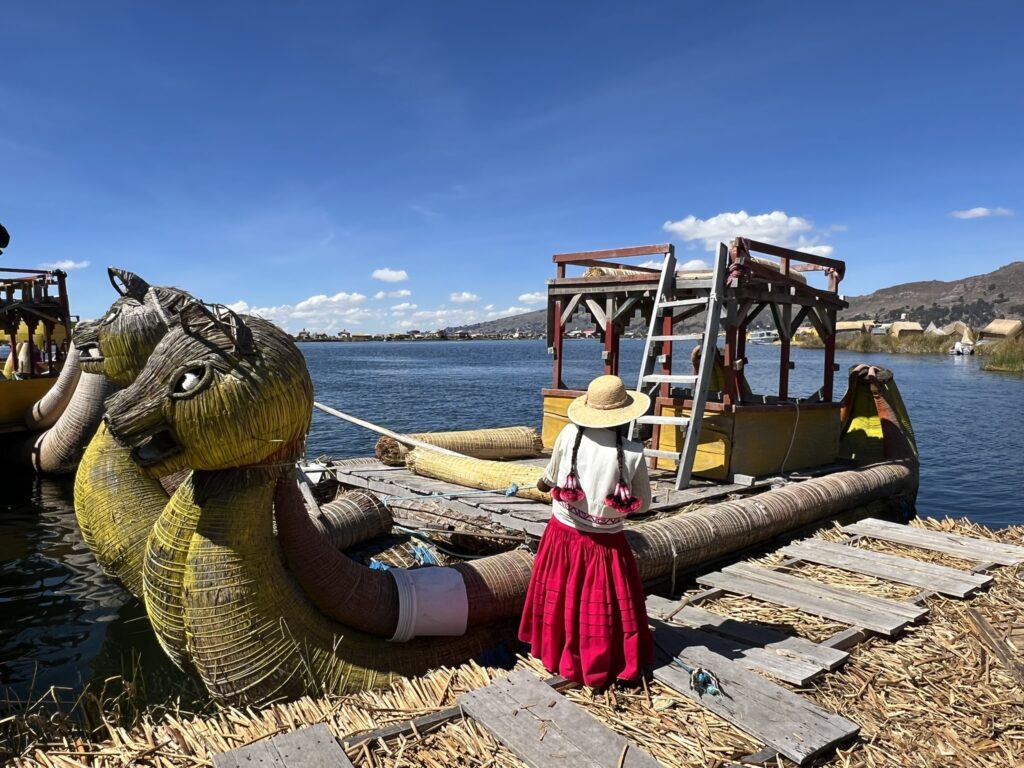
My Travel Tip of the Week
Book a full-day trip to explore Lake Titicaca from Copacabana
Isla del Sol, located in Bolivia, is the biggest island in Lake Titicaca and was the most significant island for the pre-Hispanic populations as they believed the sun god came from it. There are about 3000 inhabitants that live on the island today and throughout the island, there are still ruins from the Pre-Hispanic civilizations that attract visitors from mainland Bolivia by boat.
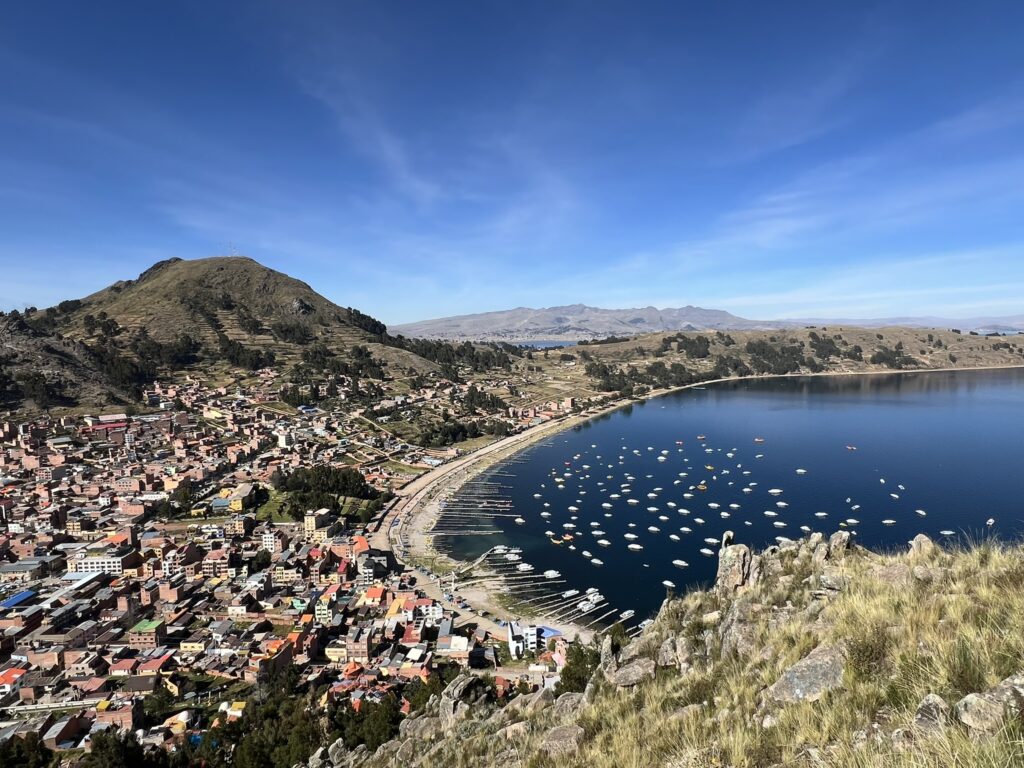
Copacabana is the most popular town in Bolivia to visit Isla del Sol and its smaller nearby island of Isla del Luna. Every tour operator in town offers options to visit the island and walking down the main streets you will pass by numerous options where you can book a tour. Most tour companies will offer 3 different ways that you can explore the island: a full-day experience, a half-day experience, and a private tour option.
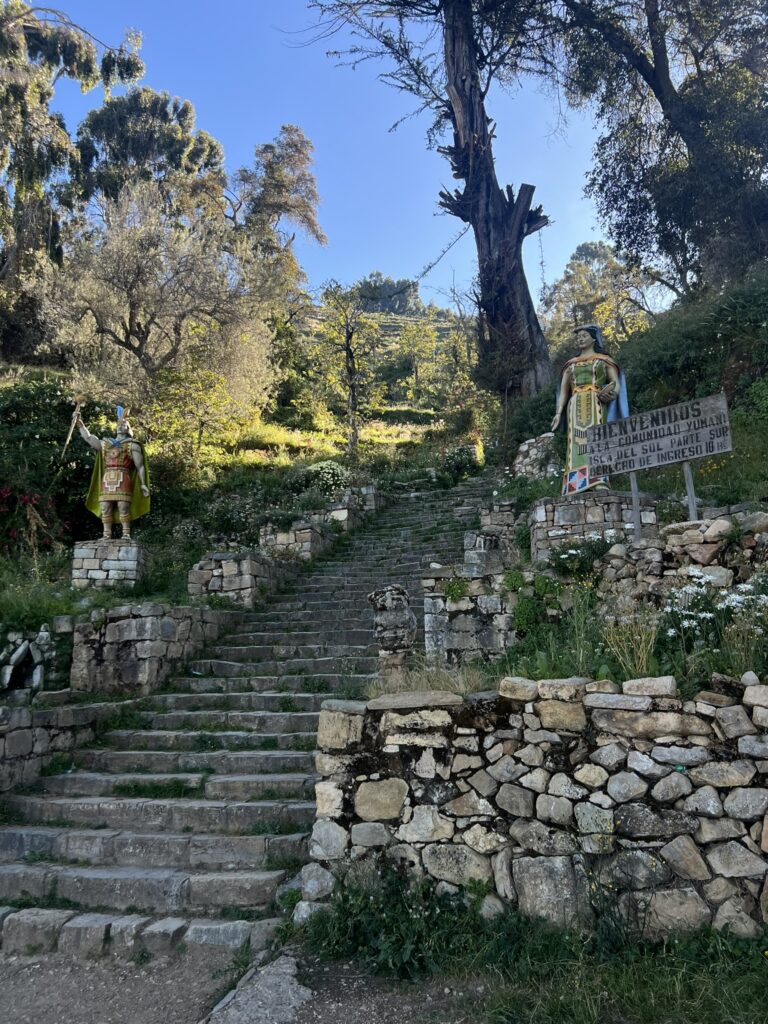
Given our travel schedule, the full-day tour completion time would not provide enough time to continue to our next destination. One of the tour companies convinced us that it would still be worthwhile to book a partial-day tour to Isla del Sol so we did this instead. Most of the time on the tour was spent on an hour-and-a-half very slow boat ride out to the island. Upon arriving at Isla del Sol, a guide took us to the most important sites on the south part of the island including Templo del Sol, Lake Titicaca viewpoints, Fuente Inca, and Escalera del Inca. We learned a little more about the significance of each place but the visit was very rushed and did not leave much time to enjoy the island, and we were only able to gain a surface-level understanding of one part of the island.
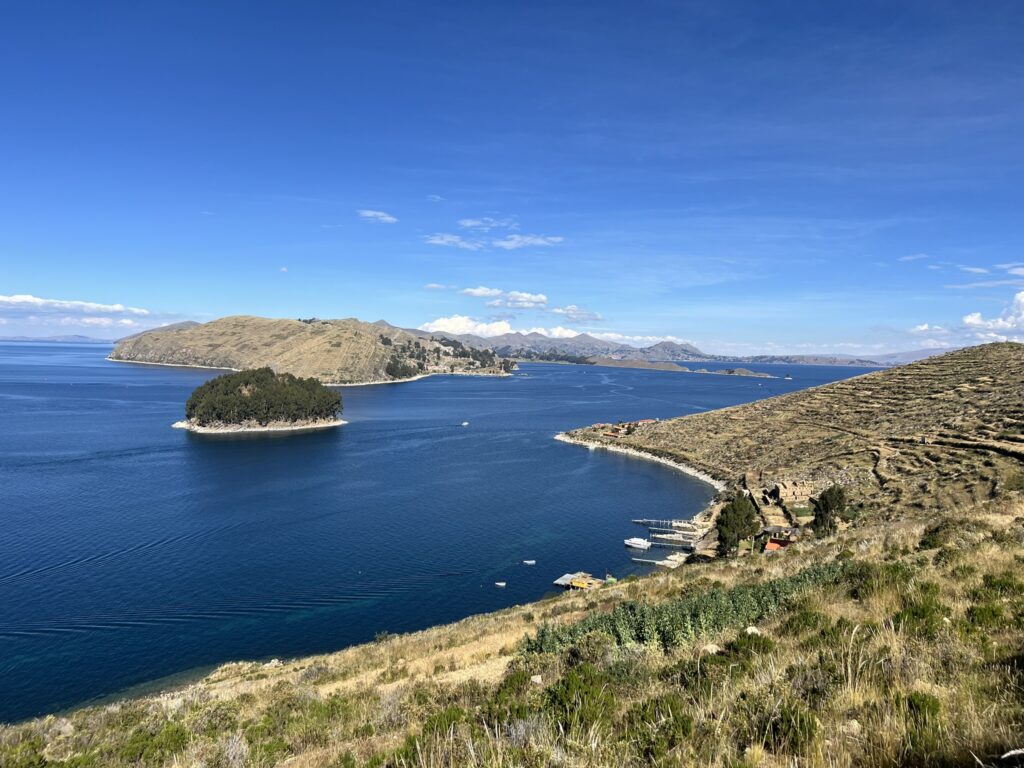
In hindsight, we should have adjusted our travel schedule to allow us to partake in the full-day tour experience. This would have given us more time to enjoy the south part of Isla del Sol, visit the north part of the island, and go to Isla de la Luna. Some people even recommended staying overnight on the island which could have been an even more rich cultural experience.
My Additional Anecdote This Week
A homestay is a meaningful way to experience culture
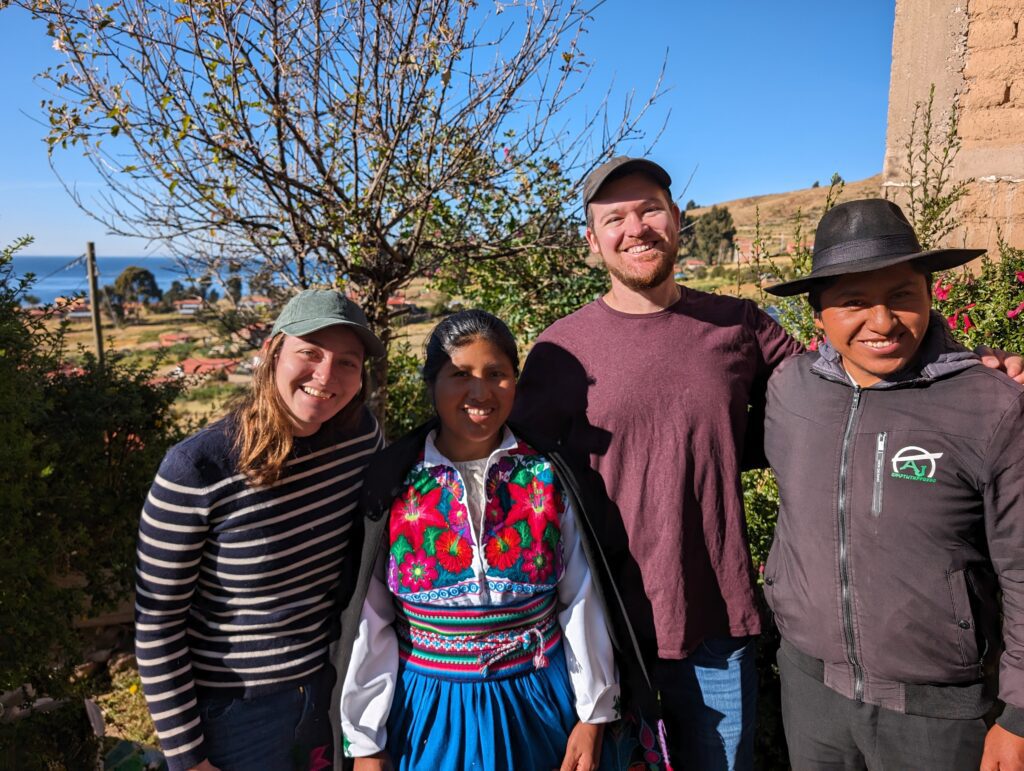
One of my favorite parts of studying abroad was my experience living in a homestay. From a practical standpoint, it was helpful to speak Spanish daily but more importantly it was a wonderful way to build deeper connections with people and better understand the culture. One of the experiences that caught our eye while visiting Lake Titicaca in Peru was spending a night with a homestay on Amantani Island facilitated by a cultural tour group.
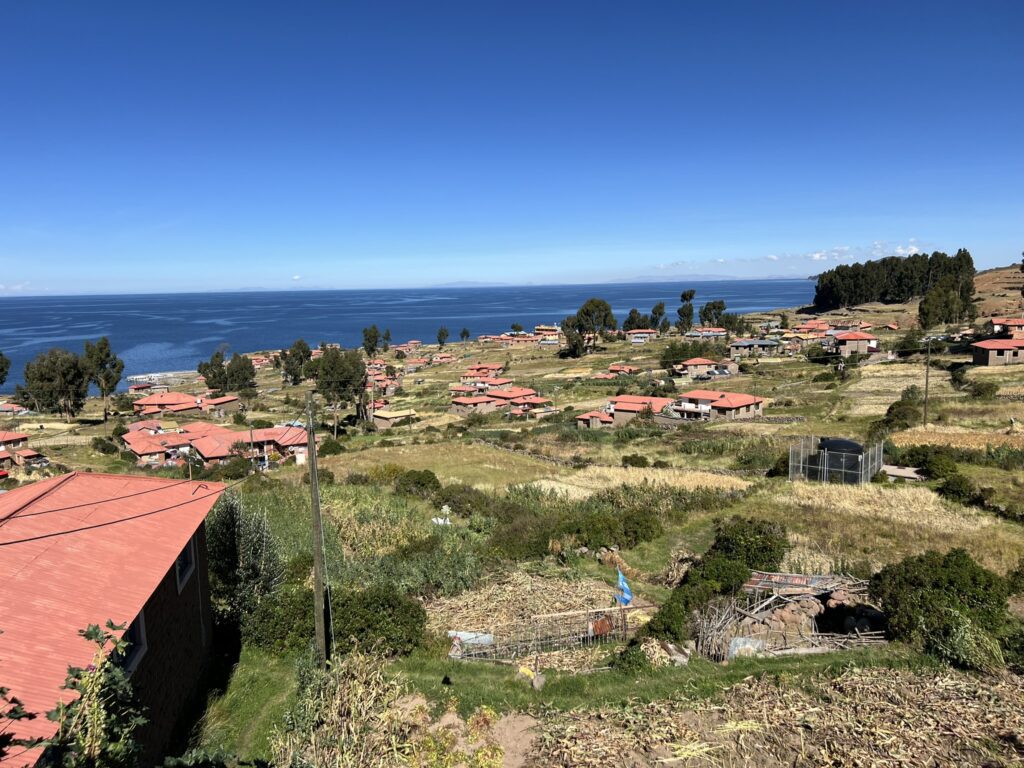
Going into the stay, I didn’t want to get my hopes up that it would be as meaningful as my study abroad homestay, and I wasn’t sure what level of interest the homestay actually had in hosting tourists on their tranquil island. Upon arriving at the dock, and being welcomed by one of our hosts, Mariluz, it was clear that they were truly excited for our visit. Her husband Jugo also greeted us warmly at their home and thanked us for coming to visit. The entire island speaks the local language of Quechua but also is taught Spanish in school so it was easy to communicate.
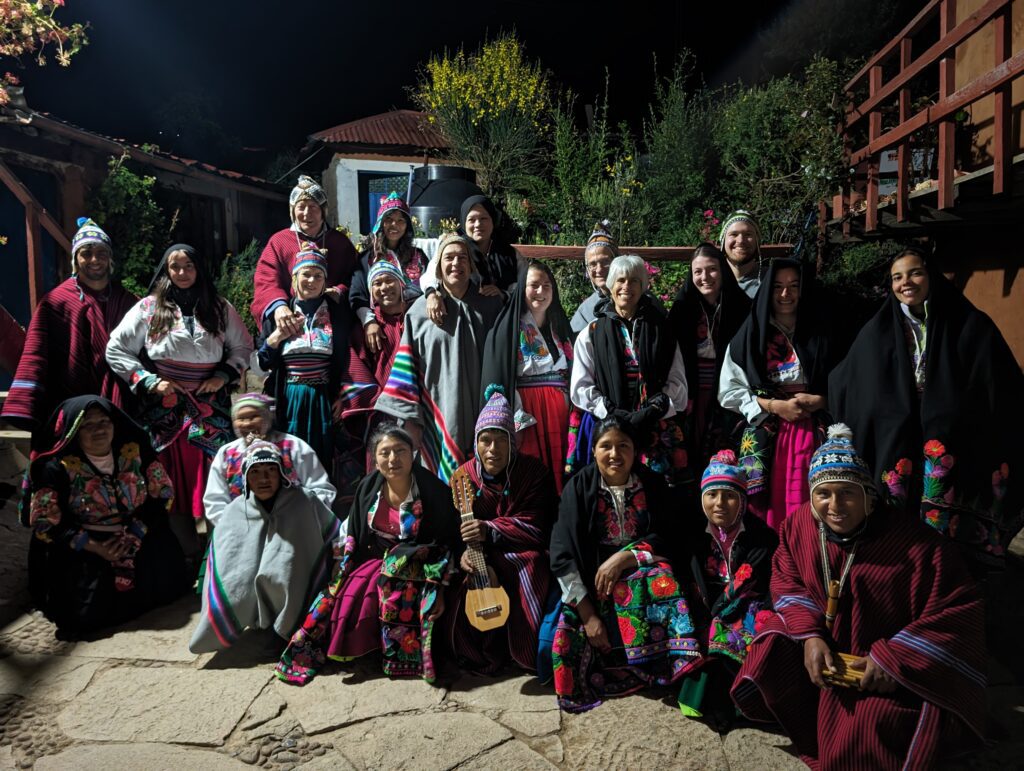
Throughout our stay, we learned more about the traditions of the island such as weaving, agriculture production, and important religious sites still in use from the pre-Hispanic times. We were even invited to dress in their traditional clothing and join in a celebration with music as well as dancing that they said was a token of their appreciation for our visit. Jugo, Mariluz, and their family could not have been more gracious hosts, and we would highly recommend any people considering a visit to stay with them at Tukuypaj Amantani. The stay helped us to better appreciate the local culture and was a highlight experience.

